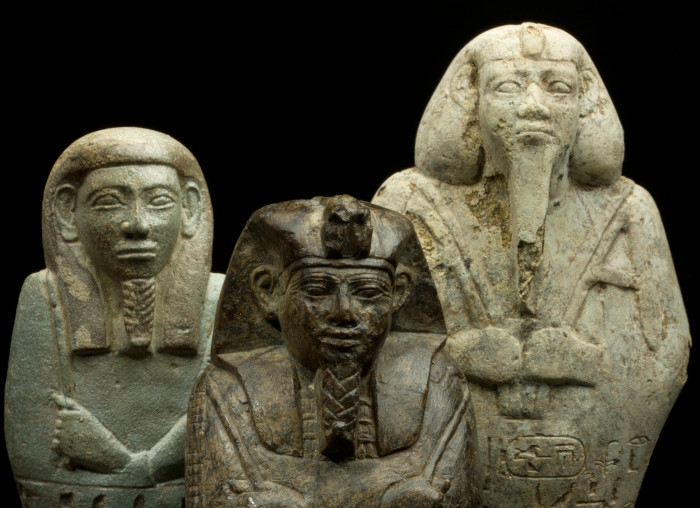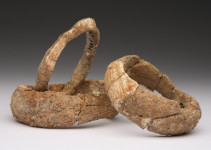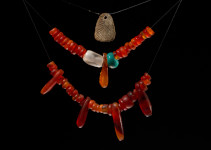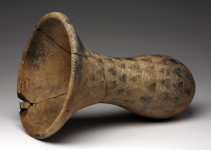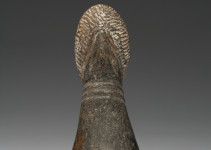Exhibitions
Departments
The first farmers
After the period of a relatively humid climate, the gradual warming and drying of the Sahara forced people to migrate to more inviting areas such as large wadis and above all towards the Nile Valley. The climatic changes progressed very slowly and were accompanied by social transformations, leading to the rise of the agricultural economy.
The traces left behind by the first farmers include settlement remains manifested by smaller or larger concentrations of richly-ornamented pottery, stone tools, quern fragments, and animal bone pieces. The settlement sites are accompanied by cemeteries located in the same areas as houses.
The research carried out for over 30 years at the Neolithic site of Kadero (a settlement site and a cemetery located about 20 km north of Khartoum) by the Poznań archaeologists, has provided a unique opportunity to study different aspects of life of the old Nubian pastoral communities. Over 200 graves uncovered at the Kadero cemetery allowed the reconstruction of the social structure of the community. The majority of graves were equipped modestly or did not contain any items. There was also a small percentage of rich burials, concentrated in a separate zone of the necropolis. They contained high quality pottery (among them characteristic bell-shaped beakers with intricate geometric decoration, used probably in burial rituals) and ornaments made of ivory, precious stones and shells (both local and imported from more distant places, e.g. the Red Sea). Other finds included maces with stone heads. The presence of richly equipped children's graves suggests that belonging to social elites was hereditary.
The process of social differentiation accelerated in the Late Neolithic and it can be observed, among others, at the cemetery of Kadada dating to the first half of the fourth millennium BC.
Nasza strona internetowa używa plików cookies (tzw. ciasteczka) w celach statystycznych, reklamowych oraz funkcjonalnych. Dzięki nim możemy indywidualnie dostosować stronę do twoich potrzeb. Każdy może zaakceptować pliki cookies albo ma możliwość wyłączenia ich w przeglądarce, dzięki czemu nie będą zbierane żadne informacje. Dowiedz się więcej jak je wyłączyć. OK, Rozumiem


